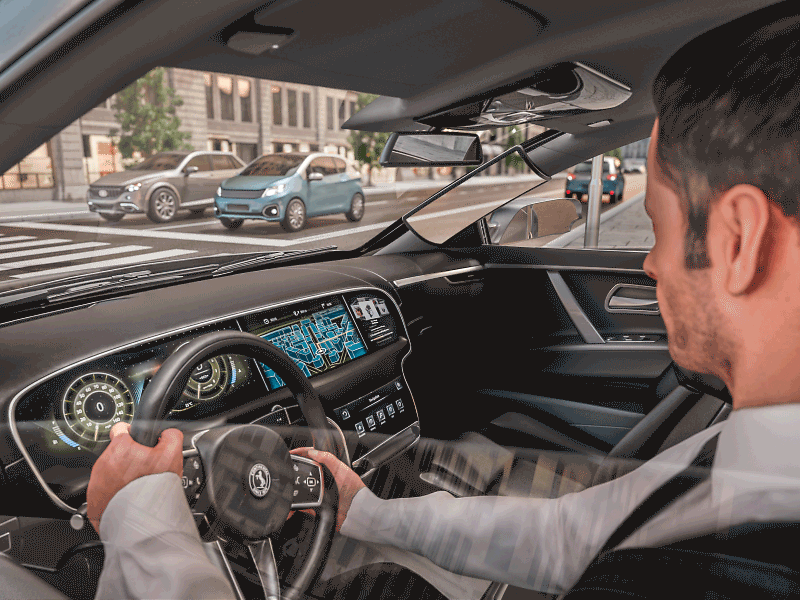Continental's interior camera and OLED display paired in vehicle's A-pillar to improve driver safety
The Virtual A-Pillar offers a dynamic perspective for the driver, giving the driver an experience more like looking through an extended 'window' rather than at a live video feed.
German Tier-1 supplier Continental has developed a virtual A-pillar to help remove forward blind spots, which it says will make wide A-pillars virtually see-through.
The front support pillars (often referred to as A-pillars) anchor the windshield and the beginning foundation of the vehicle’s roof, however, it is also been identified as visual obstructions for the driver. Over the years, the A-pillars have expanded to improve rollover safety and meet more rigorous federal roof-crush standards. Continental says this trend poses an increased hazard to pedestrians and vulnerable road users easily obscured from the driver’s view.
Dr Karsten Michels, head of Systems and Technology -- interior division, Continental, said: “Increasing the safety of all road users, from drivers to pedestrians, is the motivating force behind innovative Continental technologies like the Virtual A-Pillar. By pairing and implementing advanced technology in the vehicle, Continental has created a solution that eliminates the forward blind spots of the A-pillars, helping to reduce a critical safety hazard experienced by so many road users.”
The company states that in some situations, depending on the pillar’s width, a linear distance of over 36 inches can end up being obstructed at just 12 feet from the pillar. This increases substantially as the distance from the vehicle grows. As a result, the design of the A-pillar is an important factor when trying to increase the driver’s forward field of view.

Continental says its virtual A-pillar is designed to address the growing problem on vehicles that need widened front pillars to meet mandatory safety testing. Utilising the new flexible OLED displays and advanced head tracking, it is able to bring enhanced visibility to the driver’s view. At present, drivers are used to compensating for lack of forward vision by adjusting their position while driving. The Virtual A-Pillar tracks these movements using an interior camera mounted just above the steering wheel. At the same time, Continental’s SurroundView camera, mounted on the vehicle’s exterior, feeds a live video of the vehicle’s external environment to the OLED displays embedded in the A-pillars.
By tracking the driver’s head movements paired with the exterior live image, the Virtual A-Pillar offers a dynamic perspective for the driver, giving the driver an experience more like looking through an extended 'window' rather than at a live video feed.
Enhanced safety for vulnerable road users
“This new technology allows the driver to see pedestrians and other vehicles approaching from the left and right, which would have otherwise been blocked by the A-pillar,” Michels added.
With the advancements of camera and display technology, Continental says its virtual A-pillar will allow the driver to maintain a direct line of sight when turning left or right, providing additional safety for cyclists, pedestrians and other vulnerable road users.
RELATED ARTICLES
Skoda begins sale of made-in-India CKD Kushaq in Vietnam
Before production started, pre-series Kushaq vehicles covered over 330,000 kilometres on a variety of Vietnamese roads a...
Six Japanese companies join forces to expand use of recycled materials in new vehicles
Denso, Toray Industries, Nomura Research Institute, Honda Motor, Matec Inc and Rever Corporation have set up the BlueReb...
BYD selects Voestalpine as steel supplier for its Hungarian plant
The announcement of the Austrian steelmaker as a supplier demonstrates BYD’s strategic plan to source from high-quality,...





 By Autocar Professional Bureau
By Autocar Professional Bureau
 25 Oct 2018
25 Oct 2018
 15430 Views
15430 Views









